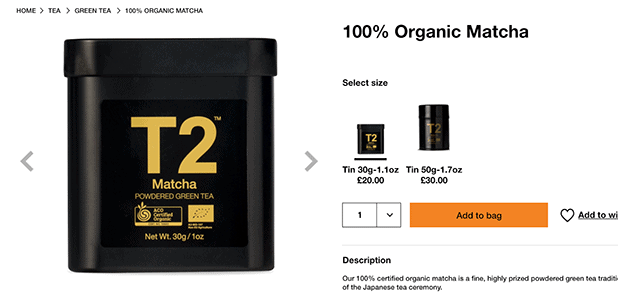Shopify price experimentation is essential no matter what stage your business is at.
Getting your prices right the first time is always tricky in a new store. You’re conflicted between wanting to charge the highest you can to ensure a healthy profit margin, but also, your store is newly established, so you don’t want to turn away customers.
But if you’ve been running your store for a while, you might reach a plateau point where your sales are decent but stagnant. A price increase (or decrease) could help with that.
To find right prices, you need to be able to gauge demand and consider price sensitivity. Then you can discover which price points can help you boost your margins.
The good news is that if you’re running your store on Shopify’s platform, they make it easy to test your pricing and find the optimum point for your customers.
In this post, you’ll learn:
- The benefits of experimenting with your pricing
- Things you need to be aware of before you get started
- Why dynamic pricing could be the right route for you
- How to utilize A/B testing in order to test winning price points.
- Benefits of competitor price monitoring to determine the best price.
Let’s go.
Why experiment with pricing
E-commerce pricing strategy is an ongoing exercise you should look at throughout your business. Pricing strategy means that you’ll be able to consistently consider what price your products are at compared to the current market value and your competitors to give yourself a competitive advantage.
The first reason you need to experiment with the pricing on your Shopify store is your increased profit margins. Often, your business expenses might increase. Expenses could be because your manufacturer has increased the cost of producing your products or you recently made a new hire that eats directly into your business funds.
Whatever the reason, you need to ensure you’re always a step ahead and have room to increase your prices to accommodate that.
The second reason you might need to experiment with your pricing is if you find products need to sell better than they are.
You could introduce a new product range to your store after seeing lots of chatter on the web, but people seem to need to buy. You can also see some action in your Shopify live chat app.
This can be concerning for any shop owner, and often a simple price experiment could be the answer, especially if you have competitors selling the same product. Let’s look at an example.

On this site, 30g of Matcha Tea is £20.00

However on this site, it’s only £15.00
They have a few options here.
Now if the first store found that they needed help to sell this type of tea, they might look to their competitors and see that everyone else is charging a lot less.
First, they can look at their value. Their tea is £5 more expensive than one of their top competitors, but does their product listing add £5 worth of value? In other words, why should someone buy from them instead of their competitor?
Second, they could look at their pricing. Is there a way for them to lower their prices slightly to assume the market position but still make a profit?
This is a classic example of when you might need to look at or analyze your pricing, but it isn’t the only one.
If you find, for some reason, products stop selling as well as they used to, or don’t sell at all, consider experimenting with your pricing.
Things You Need To Be Aware Of
But before you jump in and change all the prices on your website as fast as you can, there are a few things you should be aware of.
First, consider your customer’s willingness to pay. Some products don’t warrant themselves to rapid price increases simply because customers are only willing to pay what they already do.
If your product is a nice-to-have and not a necessity, customers will react negatively to your price increases, and you’ll lose sales.
That doesn’t mean you can’t experiment with your pricing. Instead of increasing your prices, you could experiment with different psychological pricing strategies. Pricing can convince customers to buy from you without giving the impression that you’ve increased your prices.
Second, think about trust. When customers buy from you, they exert a certain level of trust. They trust you’re a reputable business that won’t steal their money. They trust that your products will match up with their expectations and the trust that your pricing is fair.
For example, suppose you have an e-commerce store with only one product. This is often a thoughtful approach, especially for a new store trying to establish itself.
If everyone knows your pricing is at X, and then suddenly they check your website and it’s increased to Y, how do you think that will make them feel?

This single product e-commerce store sells hot sauce.

The product is marketed at $17.98 with free shipping. Imagine buying from this store regularly only to find the price had increased to $28.65 the next time you visit without any warning or reason.
Dynamic Pricing
When you’ve decided that you’d like to try and do Shopify price experimentation,, one tactic to consider is dynamic pricing.
Dynamic pricing is a way in which you can alter the price a customer sees based on specific pre-arranged characteristics or timeframes.
One thing to note about dynamic pricing is that it doesn’t work for products that have fixed price points. Dynamic pricing uses price intelligence to apply varied price points for specific products.
This helps you stay competitive. For example, if all your customers decrease their prices to $1 and you’re still charging $70 do you think anyone will buy from you?
Probably not. But also it’s hard work to manually track each of your competitors every single day to look at what they’re charging for the same products.
So, consider dynamic pricing software that automatically alters your prices to help you stay competitive.
A/B Testing for Pricing
The second thing you can do for Shopify price experimentation is A/B testing. The test is when you create two almost identical pages with different price points.
A/B testing is effective if you’re launching a new product and trying to get a feel for the market and their response to your product and pricing.
You might have seen that customers from different channels react and behave differently.
For example, someone who searches on Google for your exact product is much more likely to buy than someone who stumbles across your product on social media.
Because of this, you could a/b test different prices for those that come to your Shopify store from social media and those that come from organic search.
Monitor Competitor Prices
The following step you can take is to monitor your competitors’ prices. Competitor data can be an excellent guide if you need to know what you should offer.
You can gather all competitor price data with a competitor price tracking tool in a few clicks. Then, it would help to decide where to position your brand while moving into different price points.
But you can also track your competitor’s price manually. It will lead you to lose much of your time and effort. And also, since e-commerce prices are changing in seconds, you might be working with the wrong price points. That’s the main reason why you should consider working with a price tracking tool.
After experimenting with your price, you can find a sweet spot for your Shopify price experimentation. It’s a point where you are happy to sell and your customers are happy to buy.
Monitoring competitors can help make data-backed decisions. And you can make your test more efficient.
Shopify Pricing Experimentation Takeaways
When getting the pricing right on your e-commerce store (new or established), you need to factor in several issues.
Not only do you have to think about your profit margins, but you have to consider your customers. And how much they’re likely to spend.
In this post, we’ve looked at four different concepts. First, we looked at the benefits of Shopify price experimentation on your bottom line and profits.
Then we considered the concerns you should be aware of before you jump straight into it.
We looked at two approaches for price optimization. Dynamic pricing to A/B pricing, to give you two angles to boost your business.
Lastly, we learned that competitor price tracking can give you great insights into how you should price. You will gather competitor data and make data-backed decisions while experimenting with your pricing. It’s a great way to save time and effort.
Have you ever experimented with your prices on your Shopify store? Leave a comment below.
pricing strategiesShopify

